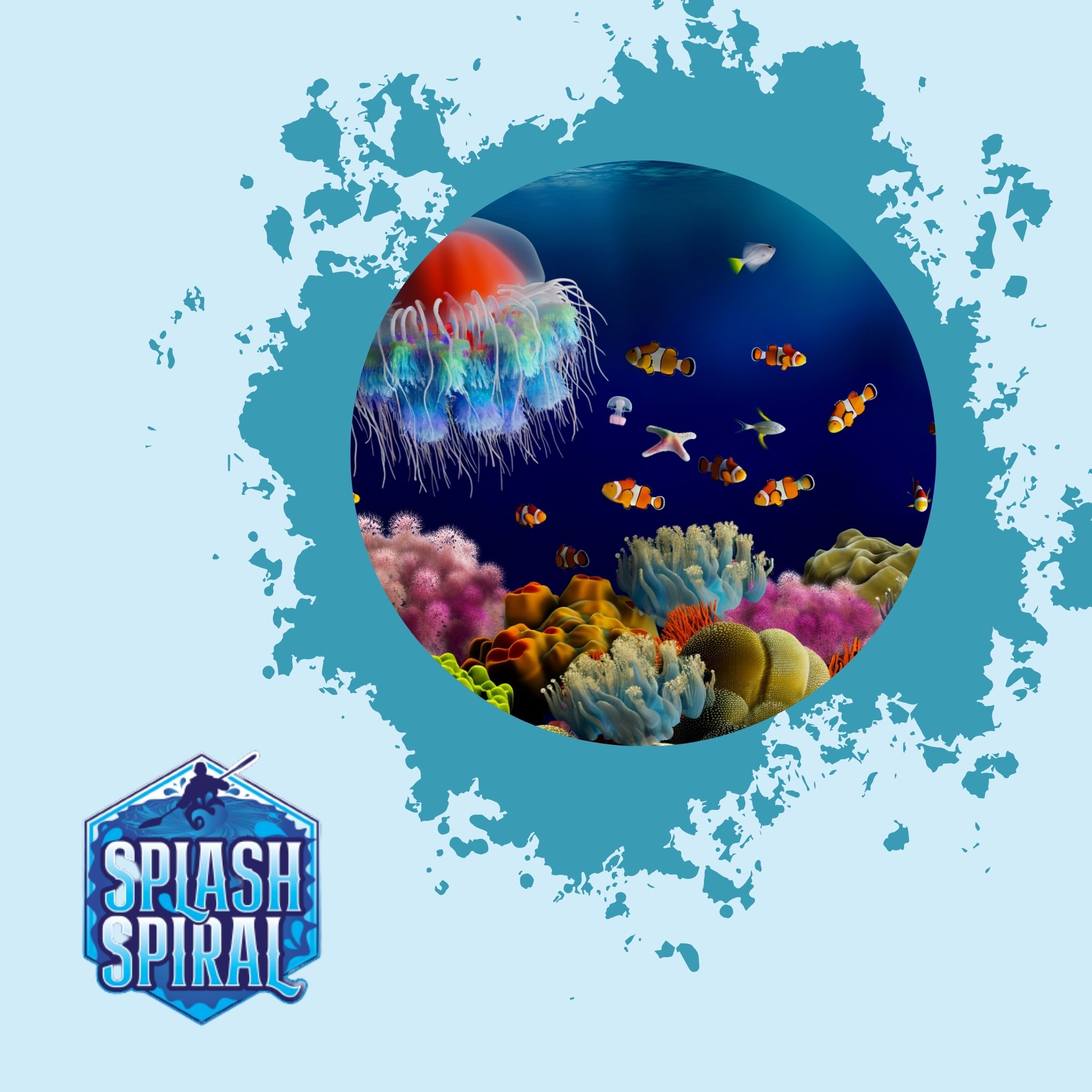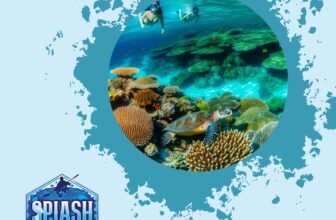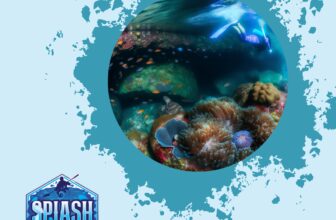
Cnidarians, including jellyfish, corals, and sea anemones, hold a vital place in marine ecosystems. Yet, their numbers face significant threats from human activities. Understanding the diversity, ecological role, and conservation status of cnidarians is crucial for preserving marine biodiversity and supporting balanced ocean ecosystems.
Introduction
Cnidarians are a group of mesmerizing marine animals that include jellyfish, corals, and sea anemones. These creatures are known for their distinctive characteristics, such as their radial symmetry and the presence of stinging cells called cnidocytes, which they use for capturing prey and defense. Found abundantly in oceans worldwide, cnidarians play a crucial role in marine ecosystems.
Purpose of the Article
The purpose of this article is to shed light on:
- The incredible diversity of cnidarians,
- Their essential ecological functions, and
- Their current conservation status.
By diving deeper into their world, we hope to raise awareness and understanding of these fascinating organisms, which are often taken for granted.
Importance of Conservation
Conservation of cnidarian species is vital for several reasons:
- Survival of these unique creatures: Ensuring that cnidarians continue to thrive.
- Health of our oceans: As foundation species, particularly corals, they contribute to the formation of reefs that support a plethora of marine life.
Protecting cnidarians means preserving the intricate and delicate balance of marine biodiversity, ensuring that future generations can continue to enjoy the beauty and bounty of our underwater worlds.
Diversity of Cnidarians
Diving into the world of cnidarians, you quickly realize the incredible variety within this group. Cnidarians are split into four main classes:
Anthozoa: Corals and Sea Anemones
Anthozoans, like corals and sea anemones, are perhaps the most familiar. You can spot them in vibrant coral reefs or attached to rocky substrates. They’re stationary and often boast symbiotic relationships with tiny marine algae called zooxanthellae. This symbiosis provides the corals with food through photosynthesis and gives them their spectacular colors.
Hydrozoa: Hydroids and Siphonophores
This class includes the more enigmatic hydroids and siphonophores. Hydroids might look like plants but are actually colonies of tiny, interdependent polyps. On the other hand, siphonophores like the Portuguese man o’ war are fascinating drifters, looking like single organisms but actually complex colonies. Each member of the colony specializes in a different function, from feeding to reproduction.
Scyphozoa: True Jellyfish
Known as the true jellyfish, scyphozoans are the classic bell-shaped creatures you envision pulsating through the water. These free-swimmers come in various forms and sizes and possess stinging cells to capture prey. They lack brains, yet they navigate the ocean gracefully.
Cubozoa: Box Jellyfish
Finally, we have the notorious cubozoans or box jellyfish. Sporting cube-like bells and potent venom, these are the stealthy assassins of the cnidarian world. Found primarily in tropical waters, box jellyfish can be dangerous to humans, making them both intriguing and fearsome.
Understanding these groups reveals the cnidarians' vast diversity and uniqueness. Each class has adapted to its environment in extraordinary ways, contributing to the overall health and complexity of marine ecosystems. So next time you dive, keep an eye out for these fascinating creatures and appreciate the role they play in the underwater world.
Ecological Role of Cnidarians
Cnidarians play a pivotal role in maintaining the health and balance of marine ecosystems, thus directly influencing marine biodiversity. They are not just passive drifters or colorful corals; their presence and activities bring numerous benefits to ocean life.
Contribution to Ocean Ecosystems
Cnidarians contribute significantly to marine ecosystems in various ways:
-
Reef Building: Corals, which belong to the Anthozoa class, are the architects of coral reefs. These reefs form complex structures that provide shelter, breeding grounds, and feeding areas for countless marine species. A single coral reef can support thousands of different species, including fish, crustaceans, and molluscs.
-
Food Source: Many cnidarians, especially jellyfish, form an essential part of the marine food web. Predators such as turtles, certain fish species, and even birds rely on jellyfish as a significant food source. Ensuring the health and abundance of cnidarians helps maintain the balance of these food webs.
-
Nutrient Cycling: Cnidarians play a role in nutrient cycling in ocean environments. Coral reefs, for example, facilitate the recycling of nutrients that are vital for the productivity of marine ecosystems. This cycling helps in sustaining the food supply for various marine organisms.
Benefits to Other Marine Life
Cnidarians not only build habitats but also create favorable conditions for countless marine species:
-
Symbiotic Relationships: Many cnidarians engage in symbiotic relationships that offer mutual benefits. The most well-known example is the relationship between coral polyps and zooxanthellae (photosynthetic algae). The algae provide oxygen and organic products of photosynthesis to the corals, while the corals offer the algae protection and access to sunlight.
-
Protection and Shelter: The intricate structures created by coral reefs offer protection from predators and harsh environmental conditions. Numerous species, from tiny shrimps to large fish, find refuge in the crevices and nooks of coral reefs.
-
Breeding Grounds: Coral reefs serve as critical nursery areas for various marine creatures. Young fish and invertebrates use these reefs as safe havens during their early developmental stages before moving to open waters.
Importance of Coral Reefs
Coral reefs, often dubbed the “rainforests of the sea,” are invaluable to the health of marine ecosystems. They:
- Support Marine Life: Coral reefs are home to approximately 25% of all marine species, making them one of the most biologically diverse ecosystems on the planet.
- Protect Coastlines: Reefs act as natural barriers against storms and erosive wave action, thus protecting coastal areas from severe damage.
- Economic Value: Reefs contribute significantly to local economies through tourism, fishing, and recreational activities.
Understanding and preserving the ecological role of cnidarians is not just about saving individual species; it's about maintaining the intricate balance of ocean ecosystems which, in turn, supports all life on Earth. For those eager to dive into the underwater world, recognizing the importance of these fascinating creatures can deepen the appreciation of their underwater adventures and inspire them to become advocates for marine conservation.
For more on ocean ecosystems, visit Marine Viruses: Their Role in Ocean Ecosystems and Climate Regulation.
Current Conservation Status
Cnidarians, despite their resilience, are currently in a precarious position. The conservation status of various cnidarian species varies widely, but the trend is concerning. Let's break down some of the major threats.
First off, climate change is arguably the most significant factor. As ocean temperatures rise, coral reefs suffer from coral bleaching—a stress response that expels the symbiotic algae vital to their health. Bleached corals are more susceptible to disease and often die if conditions don't improve.
Overfishing is another considerable threat. Many cnidarian species, like reef-building corals, provide essential habitats for fish and other marine creatures. When fish populations are over-harvested, the balance of marine ecosystems is disrupted, indirectly affecting cnidarians.
Pollution, too, plays a detrimental role. Chemical runoff, plastic waste, and oil spills introduce toxins into the marine environment, which can be lethal to cnidarians. These pollutants can also block sunlight, hindering the photosynthesis processes crucial for coral survival.
Understanding these threats is essential for any aspiring diver. Whether you're just starting out or have some experience, knowing what's at stake can drive home the importance of conservation efforts. Your underwater adventures depend on a healthy marine environment, and actively supporting conservation can help preserve these underwater wonders for future generations.
Efforts in Cnidarian Conservation
Protecting cnidarians, aka jellyfish, corals, and sea anemones, requires a multi-faceted approach due to the variety of threats they face. Here’s a rundown of what’s being done to safeguard these vital marine organisms.
Marine Protected Areas (MPAs)
One of the most effective strategies is establishing Marine Protected Areas (MPAs). These regions limit human activities like fishing and tourism, giving cnidarians a safe space to recover. These aren’t just arbitrary zones either; they’re picked strategically to cover biodiversity hotspots and fragile habitats.
Coral Restoration Projects
Coral reefs are among the most endangered, so special projects focus on their restoration. Using methods like coral gardening—where fragments are grown in nurseries and later transplanted back to reefs—these initiatives aim to rebuild damaged ecosystems. Often, these efforts involve local communities and divers, which helps raise awareness while making tangible improvements.
Public Awareness Campaigns
Knowledge is power. Public awareness campaigns strive to inform people about the importance of cnidarians and the challenges they face. These campaigns, ranging from educational programs in schools to social media drives, focus on changing behaviors that harm marine life and promoting eco-friendly practices.
Successful Case Studies
There are promising examples of these conservation methods in action. The Great Barrier Reef, despite its well-publicized troubles, has seen segments of its coral population bounce back due to robust MPA enforcement and active restoration efforts. In places like Belize, community-driven coral nurseries are starting to show positive results, demonstrating that local involvement can lead to successful conservation.
By employing varied strategies like creating protected areas, restoring corals, and educating the public, we can make a meaningful difference. Every bit of effort counts towards ensuring the long-term survival of these incredible marine species.
Why Conservation Matters
Cnidarians aren’t just another group of ocean dwellers; they play critical roles in maintaining the health and balance of marine ecosystems. The long-term implications of losing these creatures are severe. First off, their disappearance would drastically reduce marine biodiversity. Cnidarians like corals provide essential structures for many marine species. Without them, thousands of organisms would lose their habitats and face possible extinction.
The effects ripple out from there. Corals, for instance, act as the rainforest of the sea, fostering rich ecosystems that support fish populations, which in turn sustain larger marine life and even human communities dependent on fishing. When these structures vanish, the intricate web they support starts to unravel, affecting not just marine life but also human industries.
Moreover, healthy cnidarian populations contribute to balanced ocean ecosystems. They play substantial roles in nutrient cycling and provide food for various marine species. The loss of cnidarians disrupts these processes, leading to less stable and more fragile marine environments.
Preventing the decline of cnidarian populations isn't just about saving jellyfish or corals; it's about maintaining the integrity and balance of our entire marine ecosystem. Every dive you take in a thriving reef is a glimpse into the complexity of nature, and every effort in conservation is a step towards preserving this intricate balance for future generations.
Practical Steps for Supporting Conservation
Supporting cnidarian conservation is simpler than you might think, even if you're just starting out with diving. Here are some practical steps you can take to help protect these vital marine organisms:
Sustainable Fishing Practices
When diving or spending time near the ocean, promote and practice sustainable fishing.
- Choose sustainable seafood options: Support fishing methods that do not harm marine ecosystems.
- Avoid overfished products: Be informed about the seafood you consume.
- Responsible underwater interaction: Always respect marine life and adhere to guidelines for responsible interaction.
Keeping our oceans healthy starts with our choices.
Reducing Plastic Use
Plastic pollution is one of the biggest threats to marine life, including cnidarians.
- Use reusable bags, bottles, and containers: Reduce your plastic footprint.
- Participate in beach cleanups: Lend a hand or organize one with your diving group.
- Every piece counts: Removing even one piece of plastic helps reduce risks to marine species.
Supporting Conservation Organizations
Numerous organizations are dedicated to conserving cnidarian species and their habitats.
- Donate or volunteer: Contribute time or money to groups like The Coral Restoration Foundation or The Marine Conservation Society.
- Small contributions: Even modest donations can significantly impact broader conservation efforts.
Making a Difference
These actions might seem small, but collectively, they make a significant difference in conserving the aquatic realms we cherish and explore. By integrating these practices into your everyday life, you help ensure that future generations of divers can enjoy the vibrant and diverse worlds under the sea.
Conclusion
Cnidarians are not just captivating sights for divers; they are fundamental pillars of marine ecosystems. From the vibrant reefs built by corals to the mesmerizing movements of jellyfish, these creatures showcase a remarkable diversity that is essential for ocean health. However, their survival is increasingly threatened by climate change, pollution, and human activities. Understanding their ecological importance and the urgent need for conservation can drive collective action.
Conservation efforts—such as creating marine protected areas, supporting coral restoration projects, and spreading public awareness—are crucial steps that can help safeguard these vital species. By participating in and supporting these initiatives, you can play a role in preserving the rich biodiversity of our oceans. Whether you're a beginner diver or simply someone passionate about marine life, your actions can contribute to a more sustainable and balanced ocean ecosystem.







